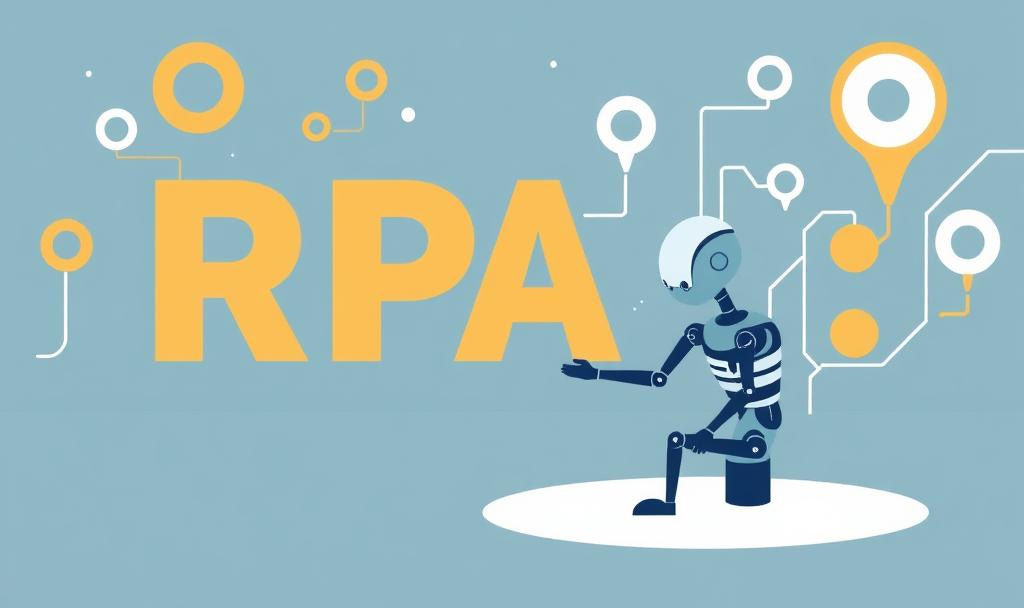Demystifying RPA: What It Is and Why It Matters
In a world where efficiency and innovation are paramount, businesses are constantly seeking ways to streamline operations and stay competitive. One technology that has emerged as a game-changer in this quest is **Robotic Process Automation (RPA)**. Despite its growing popularity, RPA remains shrouded in mystery for many. What exactly is RPA, and why does it matter? This article aims to demystify RPA, exploring its definition, benefits, applications, and why it’s becoming an indispensable tool for modern businesses.
What Is RPA?
Robotic Process Automation (RPA) is a technology that uses software robots, or "bots," to automate repetitive, rule-based tasks that were traditionally performed by humans. These bots mimic human actions, such as data entry, form filling, and transaction processing, but with greater speed, accuracy, and consistency. RPA is non-invasive, meaning it can be implemented without disrupting existing IT infrastructure, making it a cost-effective and scalable solution for businesses of all sizeHow Does RPA Work?
RPA bots interact with applications and systems just like a human would, but they do so much faster and without errors. Here’s a simplified breakdown of how RPA works:
1. **Task Identification**: Identify repetitive, rule-based tasks that are suitable for automation, such as invoice processing, payroll management, or customer onboarding.
2. **Bot Development**: Create bots using RPA software, which involves defining workflows, setting rules, and configuring the bot to perform specific actions.
3. **Deployment**: Deploy the bots to execute the tasks, either on a schedule or triggered by specific events.
4. **Monitoring and Optimization**: Continuously monitor bot performance and make adjustments to improve efficiency and accuracy.
Why RPA Matters
RPA is more than just a buzzword—it’s a transformative technology that offers tangible benefits for businesses. Here’s why RPA matters:
1. **Increased Efficiency**:
- Bots can work 24/7 without breaks, significantly speeding up processes and reducing turnaround times. For example, an RPA bot can process hundreds of invoices in the time it takes a human to complete one.
2. **Cost Savings**:
- By automating repetitive tasks, RPA reduces the need for manual labor, leading to significant cost savings. It also minimizes errors, which can be costly to rectify.
3. **Improved Accuracy**:
- RPA eliminates human errors, ensuring that tasks are performed with precision and consistency. This is particularly important in industries like finance and healthcare, where accuracy is critical.
4. **Enhanced Scalability**:
- RPA allows businesses to scale operations quickly and efficiently. Bots can be easily deployed to handle increased workloads without the need for additional hiring or training.
5. **Better Employee Experience**:
- By automating mundane tasks, RPA frees up employees to focus on higher-value activities, such as problem-solving, creativity, and customer engagement. This leads to higher job satisfaction and productivity.
6. **Compliance and Auditability**:
- RPA provides a clear audit trail of all actions performed by bots, making it easier to ensure compliance with regulations and internal policies.
Real-World Applications of RPA
RPA is being adopted across industries to streamline operations and drive efficiency. Here are some examples:
1. **Finance and Accounting**:
- RPA is widely used in finance for tasks like accounts payable and receivable, financial reporting, and reconciliation. For instance, bots can automatically extract data from invoices, match it with purchase orders, and process payments.
2. **Healthcare**:
- In healthcare, RPA is used for patient registration, claims processing, and appointment scheduling. Bots can quickly verify insurance information and update patient records, reducing administrative burdens on staff.
3. **Retail and E-Commerce**:
- RPA helps retailers manage inventory, process orders, and handle customer inquiries. Bots can track stock levels, generate shipping labels, and respond to common customer questions, improving the overall shopping experience.
4. **Human Resources**:
- HR departments use RPA for onboarding, payroll processing, and employee data management. Bots can automate the creation of employee profiles, generate pay slips, and ensure compliance with labor laws.
5. **Customer Service**:
- RPA enhances customer service by automating routine inquiries, such as password resets and account updates. This allows human agents to focus on more complex issues, improving response times and customer satisfaction.
Challenges and Considerations
While RPA offers numerous benefits, its implementation is not without challenges:
1. **Process Selection**:
- Not all processes are suitable for automation. Organizations must carefully select tasks that are repetitive, rule-based, and have a high volume of transactions.
2. **Change Management**:
- Implementing RPA requires a cultural shift within the organization. Employees may be resistant to change, and it’s important to communicate the benefits and provide training to ease the transition.
3. **Integration with Legacy Systems**:
- Some legacy systems may not be compatible with RPA, requiring additional customization or upgrades.
4. **Maintenance and Scalability**:
- RPA bots require regular maintenance to ensure they continue to function effectively. As business processes evolve, bots may need to be updated or reconfigured.
The Future of RPA
As technology continues to advance, the capabilities of RPA are expanding. Here are some trends shaping the future of RPA:
1. **Intelligent Automation**:
- The integration of RPA with artificial intelligence (AI) and machine learning (ML) is enabling more sophisticated automation. Intelligent bots can handle unstructured data, make decisions, and learn from experience, further enhancing efficiency.
2. **Hyperautomation**:
- Hyperautomation refers to the combination of RPA with other technologies, such as process mining, analytics, and low-code platforms, to automate end-to-end business processes. This holistic approach maximizes the impact of automation.
3. **Cloud-Based RPA**:
- Cloud-based RPA solutions are gaining popularity due to their scalability, flexibility, and ease of deployment. They allow organizations to quickly implement and manage bots without the need for extensive IT infrastructure.
4. **Industry-Specific Solutions**:
- As RPA adoption grows, we can expect to see more industry-specific solutions tailored to the unique needs of sectors like manufacturing, logistics, and telecommunications.
Conclusion
RPA is no longer a futuristic concept—it’s a reality that is transforming how businesses operate. By automating repetitive tasks, RPA is unleashing efficiency, reducing costs, and enabling organizations to focus on strategic growth. As technology continues to evolve, the potential of RPA will only expand, offering new opportunities for innovation and competitiveness.
Organizations that embrace RPA today will be better positioned to thrive in the digital age, delivering faster, more accurate, and more efficient services to their customers. The future of business is automated, and RPA is leading the way.
---
*Stay tuned for more insights on the latest trends and technologies shaping the future of business in our next newsletter!*





